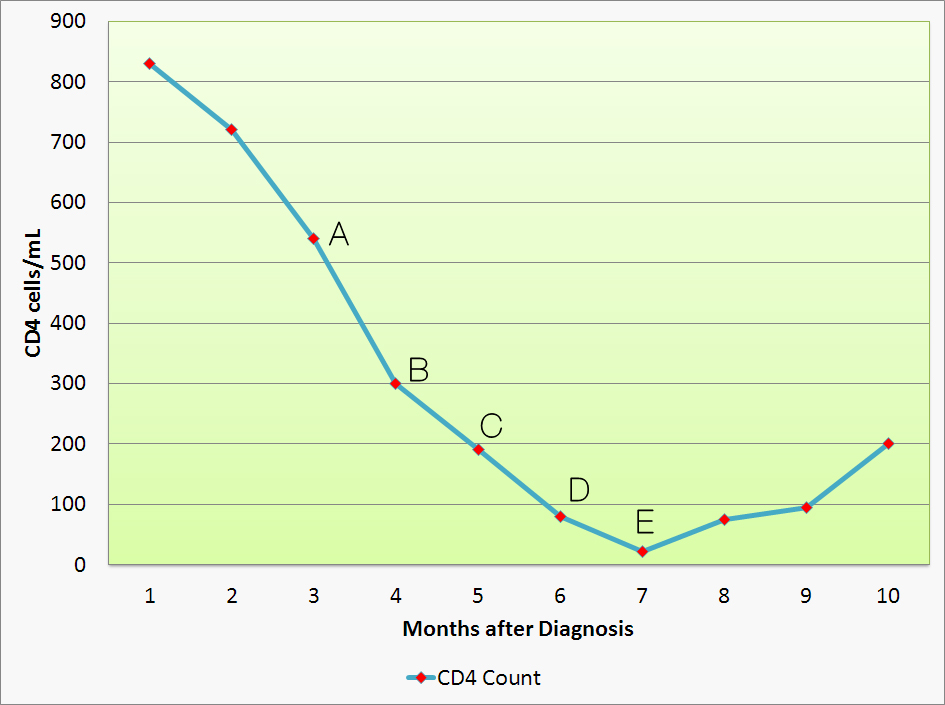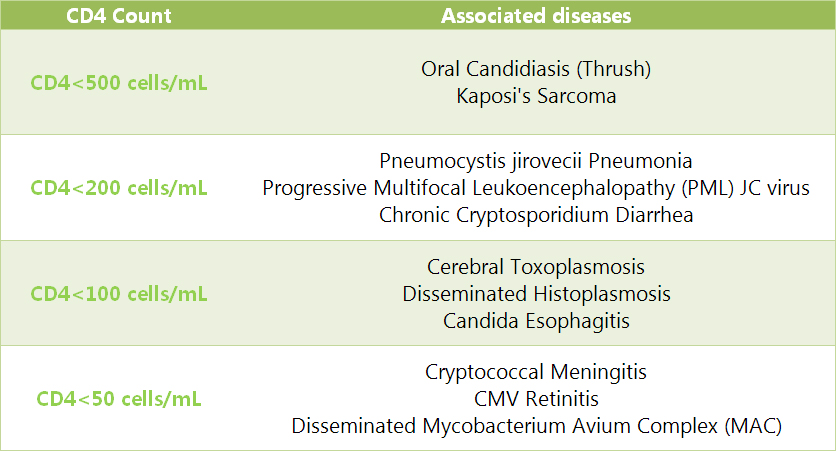WBR0559: Difference between revisions
Jump to navigation
Jump to search
Rim Halaby (talk | contribs) No edit summary |
m (refreshing WBR questions) |
||
| (7 intermediate revisions by 3 users not shown) | |||
| Line 1: | Line 1: | ||
{{WBRQuestion | {{WBRQuestion | ||
|QuestionAuthor={{ | |QuestionAuthor= {{YD}} (Reviewed by {{YD}}) | ||
|ExamType=USMLE Step 1 | |ExamType=USMLE Step 1 | ||
|MainCategory=Microbiology | |MainCategory=Microbiology | ||
| Line 8: | Line 8: | ||
|MainCategory=Microbiology | |MainCategory=Microbiology | ||
|SubCategory=Infectious Disease | |SubCategory=Infectious Disease | ||
|MainCategory=Microbiology | |||
|MainCategory=Microbiology | |MainCategory=Microbiology | ||
|MainCategory=Microbiology | |MainCategory=Microbiology | ||
| Line 20: | Line 21: | ||
|MainCategory=Microbiology | |MainCategory=Microbiology | ||
|SubCategory=Infectious Disease | |SubCategory=Infectious Disease | ||
|Prompt=A 44 year old man with history of multiple unprotected sexual encounters was found to have a positive HIV ELISA during a local screening campaign. He was referred to an HIV clinic where he was advised to monitor his CD4 counts | |Prompt=A 44-year-old man with history of multiple unprotected sexual encounters was found to have a positive HIV ELISA during a local screening campaign. He was referred to an HIV clinic where he was advised to regularly monitor his CD4 counts. The patient admits that he has been non-compliant with his anti-retroviral therapy. A trend of his CD4 counts for the past 10 months are illustrated in the graph below. At which CD4 values should the physician first advise the prophylactic administration of azythromycin? | ||
[[Image:CD4count.jpg|600px]] | [[Image:CD4count.jpg|600px]] | ||
|Explanation=Azithromycin is | |Explanation=Azithromycin is a macrolide antibiotic that binds to 23S rRNA of the 50S ribosomal subunit and inhibits protein synthesis via inhibition of translocation. Azythromycin may be administered to treat cases of atypical pneumonias and gram-positive cocci infections in patients allergic to penicillin. In addition, azythromycin may be administered prophylactically to HIV-positive patients whose CD4 counts are below 50 cells/mL to prevent the development of disseminated Mycovacterium Avium Complex (MAC). Mycobacterium avium complex (MAC) includes the following organisms: ''M. avium'' and ''M. intracellulare''. | ||
The table below summarizes the AIDS associated illnesses and the corresponding CD4 counts at which they are observed. | |||
The following table summarizes the association between opportunistic infections and CD4 counts in HIV patients. | |||
[[Image:AIDS_illnesses_CD4.jpg|800px]] | |||
| | |||
|AnswerA=A | |AnswerA=A | ||
|AnswerAExp=CD4 > 500 cells/mL is considered normal. Individuals with CD4 > 500 cells/mL do not require prophylactic administration of azythromycin. | |||
|AnswerB=B | |AnswerB=B | ||
|AnswerBExp=HIV patients with CD4 between 200 and 500 cells/mL may develop oral candidiasis and Kaposi's sarcoma. Prophylactic administration of drugs is not recommended when CD4 counts are > 200 cells/mL. | |||
|AnswerC=C | |AnswerC=C | ||
|AnswerCExp=HIV patients with CD4 < 200 cells/mL may develop ''Pneumocystis jirovecii'' pneumonia, progressive multifocal leukoencephalopathy JC virus, or cryptosporidium-associated diarrhea. HIV patients with CD4 < 200 cells/mL require TMP-SMX prophylaxis against ''P. jirovecii'' pneumonia. | |||
|AnswerD=D | |AnswerD=D | ||
|AnswerDExp=HIV patients with CD4 < 100 cells/mL may develop cerebral toxoplasmosis, disseminated histoplasmosis, or candida esophagitis. HIV patients with CD4 < 100 cells/mL require TMP-SMX prophylaxis against both ''P. jirovecii'' pneumonia and toxoplasmosis. | |||
|AnswerE=E | |AnswerE=E | ||
|AnswerEExp=HIV patients with CD4 < 50 cells/mL may develop cryptococcal meningitis, CMV retinitis, and disseminated mycobacterium avium complex (MAC). HIV patients with CD4 < 50 cells/mL require once-weekly azythromycin against MAC. | |||
|EducationalObjectives=HIV patients with CD4 < 50 cells/mL may develop cryptococcal meningitis, CMV retinitis, and disseminated mycobacterium avium complex (MAC). HIV patients with CD4 < 50 cells/mL require once-weekly azythromycin against MAC. | |||
|References=Jung AC, Paauw DS. Diagnosing HIV-related disease: using the CD4 count as a guide. J Gen Intern Med. 1998;13(2):131-6.<br> | |||
First Aid 2014 page 169, 188 | |||
|RightAnswer=E | |||
|WBRKeyword=CD4 count, AIDS, Disseminated MAC, Mycobaterium avium complex, Azythromycin, Prophylaxis, Prophylactic, MAC, HIV, AIDS, Opportunistic infections, Opportunistic infection | |||
|Approved=No | |Approved=No | ||
}} | }} | ||
Latest revision as of 00:57, 28 October 2020
| Author | [[PageAuthor::Yazan Daaboul, M.D. (Reviewed by Yazan Daaboul, M.D.)]] |
|---|---|
| Exam Type | ExamType::USMLE Step 1 |
| Main Category | MainCategory::Microbiology |
| Sub Category | SubCategory::Infectious Disease |
| Prompt | [[Prompt::A 44-year-old man with history of multiple unprotected sexual encounters was found to have a positive HIV ELISA during a local screening campaign. He was referred to an HIV clinic where he was advised to regularly monitor his CD4 counts. The patient admits that he has been non-compliant with his anti-retroviral therapy. A trend of his CD4 counts for the past 10 months are illustrated in the graph below. At which CD4 values should the physician first advise the prophylactic administration of azythromycin? |
| Answer A | AnswerA::A |
| Answer A Explanation | [[AnswerAExp::CD4 > 500 cells/mL is considered normal. Individuals with CD4 > 500 cells/mL do not require prophylactic administration of azythromycin.]] |
| Answer B | AnswerB::B |
| Answer B Explanation | [[AnswerBExp::HIV patients with CD4 between 200 and 500 cells/mL may develop oral candidiasis and Kaposi's sarcoma. Prophylactic administration of drugs is not recommended when CD4 counts are > 200 cells/mL.]] |
| Answer C | AnswerC::C |
| Answer C Explanation | [[AnswerCExp::HIV patients with CD4 < 200 cells/mL may develop Pneumocystis jirovecii pneumonia, progressive multifocal leukoencephalopathy JC virus, or cryptosporidium-associated diarrhea. HIV patients with CD4 < 200 cells/mL require TMP-SMX prophylaxis against P. jirovecii pneumonia.]] |
| Answer D | AnswerD::D |
| Answer D Explanation | [[AnswerDExp::HIV patients with CD4 < 100 cells/mL may develop cerebral toxoplasmosis, disseminated histoplasmosis, or candida esophagitis. HIV patients with CD4 < 100 cells/mL require TMP-SMX prophylaxis against both P. jirovecii pneumonia and toxoplasmosis.]] |
| Answer E | AnswerE::E |
| Answer E Explanation | [[AnswerEExp::HIV patients with CD4 < 50 cells/mL may develop cryptococcal meningitis, CMV retinitis, and disseminated mycobacterium avium complex (MAC). HIV patients with CD4 < 50 cells/mL require once-weekly azythromycin against MAC.]] |
| Right Answer | RightAnswer::E |
| Explanation | [[Explanation::Azithromycin is a macrolide antibiotic that binds to 23S rRNA of the 50S ribosomal subunit and inhibits protein synthesis via inhibition of translocation. Azythromycin may be administered to treat cases of atypical pneumonias and gram-positive cocci infections in patients allergic to penicillin. In addition, azythromycin may be administered prophylactically to HIV-positive patients whose CD4 counts are below 50 cells/mL to prevent the development of disseminated Mycovacterium Avium Complex (MAC). Mycobacterium avium complex (MAC) includes the following organisms: M. avium and M. intracellulare.
The table below summarizes the AIDS associated illnesses and the corresponding CD4 counts at which they are observed.
The following table summarizes the association between opportunistic infections and CD4 counts in HIV patients.
|
| Approved | Approved::No |
| Keyword | WBRKeyword::CD4 count, WBRKeyword::AIDS, WBRKeyword::Disseminated MAC, WBRKeyword::Mycobaterium avium complex, WBRKeyword::Azythromycin, WBRKeyword::Prophylaxis, WBRKeyword::Prophylactic, WBRKeyword::MAC, WBRKeyword::HIV, WBRKeyword::AIDS, WBRKeyword::Opportunistic infections, WBRKeyword::Opportunistic infection |
| Linked Question | Linked:: |
| Order in Linked Questions | LinkedOrder:: |

